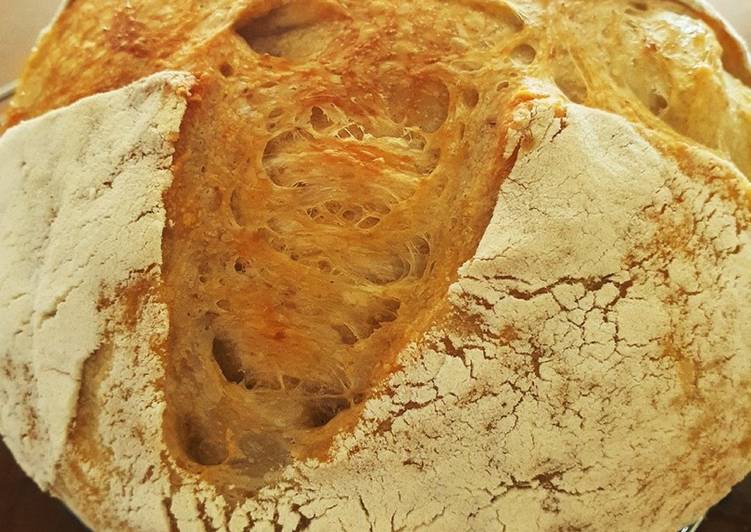Recipe: Tasty Natural Yeast Artisan Bread
Natural Yeast Artisan Bread. Another wow product from the Artisan Bread Organic bakers! Our gentle bake stabilises the oils and give the linseed bread a wonderful crust. We only use the best organic & natural ingredients, no added yeast, gums or chemicals.
 Just think, this could be the year you finally conquer baking a loaf of yeast bread. The quicker a bread is to make the lighter and cakier (is that a word?) it will be. Remember, you don't have to do absolutely anything. You can cook Natural Yeast Artisan Bread using 5 ingredients and 10 steps. Here is how you achieve that.
Just think, this could be the year you finally conquer baking a loaf of yeast bread. The quicker a bread is to make the lighter and cakier (is that a word?) it will be. Remember, you don't have to do absolutely anything. You can cook Natural Yeast Artisan Bread using 5 ingredients and 10 steps. Here is how you achieve that.
Ingredients of Natural Yeast Artisan Bread
- Prepare 250 g of bread flour.
- Prepare 50 g of wholemeal flour.
- You need 8 g of salt.
- Prepare 210 ml of water.
- Prepare 80 g of natural yeast starter (apples, grapes, etc.).
Quick, easy, rustic, entirely doable even by novices, and the. Breads Breads, Stuffing and Rolls Gifts from the Kitchen Most Popular Sides Yeast Breads. I have something amazing to share with you today! I mean, you've seen artisan bread before but you've probably never seen it as easily made as this!
Natural Yeast Artisan Bread instructions
- Combine bread flour, wholemeal flour, and water in a bowl. Mix, cover, and let rest for 30 minutes. This is known as the autolyse method..
- Once the mixture has rested for 30 minutes, combine the salt first, mix slightly and then add the natural yeast starter. Using the four-fold technique, ‘fold’ the dough in itself four times before turning the dough over and slightly rounding it. Then, cover and let rest at room temperature for 30 minutes. Repeat this process 3 times..
- For the final repetition, instead of letting the dough rest for another 30 minutes, put the dough in the fridge overnight..
- Next, take the dough out of the fridge and let the dough proof at room temperature (25℃~30℃) for about 7~8 hours, or until doubled in size..
- After the dough has proofed, take the dough out onto a work surface without flipping it over (keep the top of the dough facing up)..
- Fold the dough in itself using the four-fold technique one last time. After the fourth fold, use your index finger and thumb to pinch the seam of the dough shut. Then, let the dough bench proof (about 15 minutes)..
- After letting the dough bench proof, place a dry cloth on top of a bowl and generously sprinkle flour on it. Then, flour the top of the dough and flip the dough (top side facing down) into the bowl. Flour the dough again before folding the cloth over it and covering with a plastic bag. Let it rest at room temperature for 45 minutes..
- After 30 minutes, line a baking tray with parchment paper and preheat the oven to 250℃ for 15 minutes..
- After 45 minutes, transfer the dough into the baking tray by flipping it over and score the top of the dough in an ‘X’ shape. Spray the dough it a bit of water..
- Finally, bake the bread at 200℃ for 10 minutes, and then at 230℃ for 20 minutes..
Find helpful customer reviews and review ratings for Flour Water Salt Yeast: The Fundamentals of Artisan Bread and Pizza [A Cookbook] at Amazon.com. Forkish also claims that in order to have a good rise and taste out of bread you need a combination of natural leaven and commercial yeast. An easy artisan sourdough bread that is mixed up in the morning and baked in an enamel pot for a perfect crust and chewy interior. **The honey is optional, it helps with coloring and gives a bit more boost to the wild yeast. Slicing Tip: if you don't have a good serrated knife, try using an electric knife. Low yeast/slow rise with egg-enriched breads: Readers have asked us about the food-safety issues in trying low yeast/slow rise at room temperature with egg-enriched doughs.